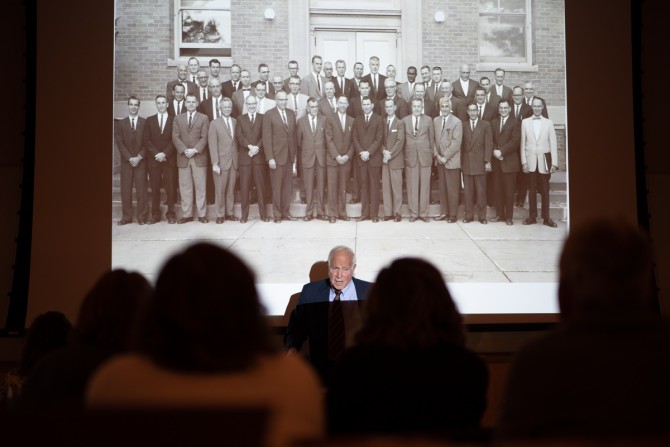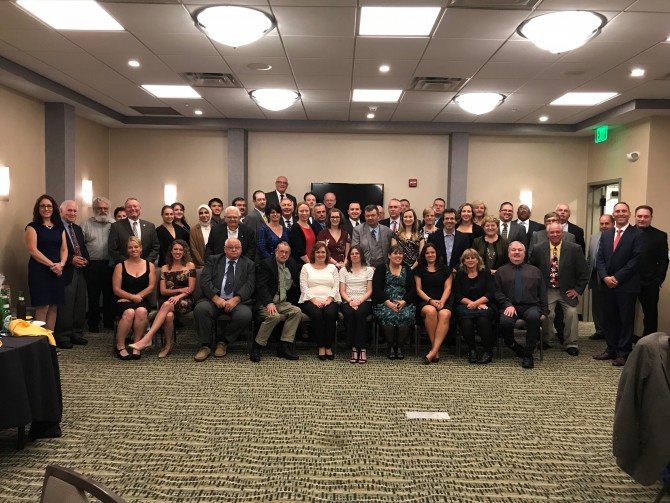Milk inspection program marks 50 years of success in New York
By Kelsey O’Connor
Nearly 15 billion pounds of milk were produced in New York in 2017, and state milk inspectors work to help ensure the safety and quality of dairy products.
Oct. 1-4 marked a 50-year milestone of the partnership between the College of Agriculture and Life Sciences (CALS) and the New York State Department of Agriculture and Markets (NYSDAM). Once a year, dairy inspectors across the state come to Cornell for training through the Certified Milk Inspectors Program. More than 45 inspectors came to Cornell to learn the latest about raw milk quality and safety standards, plus the regulatory and inspection requirements dairy producers and processors must meet for the Grade “A” seal of approval.
The program started an important shift in New York, said David K. Bandler ’55, MPS ’71, professor emeritus in Cornell’s Department of Food Science. Bandler was at Cornell for the program’s inception in the 1960s, and said the partnership has changed the role of inspectors from one of enforcement to “compliance assistance,” and helped modernize the role they played in the industry.
“In the beginning, they were doing their job by finding violations and assessing fines,” Bandler said. “But these specialists had invaluable expertise as they went from plant to plant. They learned from Cornell that they could help these dairy producers and processors get into compliance, rather than forcing them by fines.”
Inspectors are responsible for inspecting each fluid, manufacturing and wholesale frozen dessert plant in New York state every 90 days. Among other duties, they enforce milk sanitation requirements and take monthly sampling of milk and milk products.
Since the inception of the Milk Inspectors Program there has been a marked shift from fluid milk to value-added dairy products like cheeses and yogurt. Milk production in New York has increased nearly 40 percent since the 1960s, despite the number of dairy cows in the state decreasing from 1.2 million to around 620,000 today. Milk inspectors have played a pivotal role in helping producers and processors diversify their product, according to Casey McCue, director of milk control and dairy services at NYSDAM.
Since the inception of the Milk Inspectors Program, there has been a marked shift from fluid milk to value-added dairy products like cheeses and yogurt. Artisanal cheese production has soared from 118 million pounds in 1963 to 817 million pounds in 2017. The rise in Greek yogurt popularity has particularly benefited New York, which produces more than 700 million pounds compared to 22 million pounds in 1963.
Milk inspectors have been on the frontline of this shift as they work with producers and processors to innovate while maintaining quality and safety for consumers.
It’s the type of work that would have been impossible a half-century ago, according to Bandler. Thanks to standardized training and a focus on compliance, dairy inspectors are an important link to the success of the dairy industry in New York, he said.
McCue credited Cornell faculty and facilities for modernizing the skills of inspectors.
“This relationship is so critical to what we do every day and to our vibrant dairy industry,” said McCue. “This long-standing relationship between the New York State Department of Agriculture and Markets and Cornell is a model for other states to follow. We are fortunate to have access to a premier land-grant university like Cornell, especially the deep bench of food science expertise it brings to the field.”
Kelsey O’Connor is a freelance writer for the College of Agriculture and Life Sciences.
Media Contact
Get Cornell news delivered right to your inbox.
Subscribe



